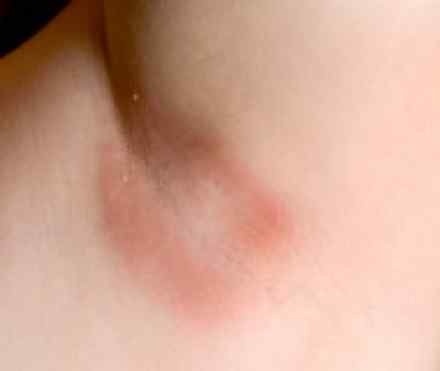
What is it?
Ringworm of the body is one of several forms of ringworm, a fungal infection that develops on the top layer of your skin. It's characterized by an itchy, red circular rash with healthy-looking skin in the middle. Ringworm gets its name from the characteristic ring that can appear, but it has nothing to do with an actual worm under your skin.
Also called tinea corporis, ringworm of the body is closely related to other fungal infections with similar names, which include:
- Athlete's foot (tinea pedis). This form affects the moist areas between your toes and sometimes on your foot itself.
- Jock itch (tinea cruris). This form affects your genitals, inner upper thighs and buttocks.
- Ringworm of the scalp (tinea capitis). This form is most common in children and involves red, itchy patches on the scalp, leaving bald patches.
Symptoms
The signs and symptoms of ringworm include:
- A circular rash on your skin that's red and inflamed around the edge and healthy looking in the middle
- Slightly raised expanding rings of red, scaly skin on your trunk or face
- A round, flat patch of itchy skin
More than one patch of ringworm may appear on your skin, and patches or red rings of rash may overlap. You can have tinea infection without having the common red ring of ringworm.
Causes
Fungal infections, such as ringworm, are caused by microorganisms that become parasites on your body. These mold-like fungi (dermatophytes) live on the cells in the outer layer of your skin.
Ringworm is contagious and can be spread in the following ways:
- Human to human. Ringworm often spreads by direct, skin-to-skin contact with an infected person.
- Animal to human. You can contract ringworm by touching an animal with ringworm. Ringworm can spread while petting or grooming dogs or cats. You can also get ringworm from ferrets, rabbits, goats, pigs and horses.
- Object to human. Ringworm can spread by contact with objects or surfaces that an infected person or animal has recently touched or rubbed against, such as clothing, towels, bedding and linens, combs, or brushes.
- Soil to human. In rare cases, ringworm can be spread to humans by contact with infected soil. Infection would most likely occur only from prolonged contact with highly infected soil.
Risk factors
You're at higher risk of ringworm of the body if you:
- Live in damp, humid or crowded conditions
- Have close contact with an infected person or animal
- Share clothing, bedding or towels with someone who has a fungal infection
- Sweat excessively
- Participate in contact sports, such as wrestling, football or rugby
- Wear tight or restricted clothing
- Have a weakened immune system
Complications
A fungal infection rarely spreads below the surface of the skin to cause serious illness. However, people with weak immune systems, such as those with HIV/AIDS, may find it difficult to get rid of the infection.
Diagnosis
Your doctor will determine if you have ringworm or another skin disorder, such as psoriasis or atopic dermatitis. He or she asks you about possible exposure to contaminated areas or contact with people or animals with ringworm.
Your doctor may take skin scrapings or samples from the infected area and look at them under a microscope. If a sample shows fungus, treatment may include an antifungal medication. If the test is negative but your doctor still suspects that you have ringworm, a sample may be sent to the laboratory for testing. This test is known as a culture. Your doctor may also order a culture if your condition doesn't respond to treatment.
References
http://www.healthline.com/health/tinea-corporis
http://www.emedicinehealth.com/ringworm_on_body/article_em.htm
http://www.webmd.com/skin-problems-and-treatments/picture-of-ringworm-of-the-body-tinea-corporis
http://www.medicinenet.com/ringworm/article.htm


